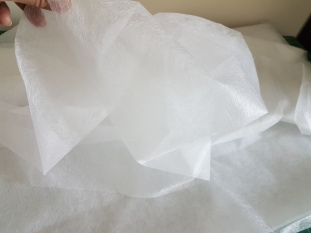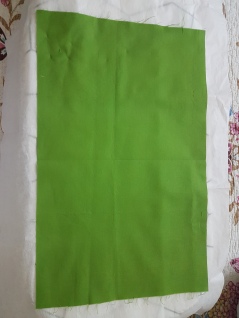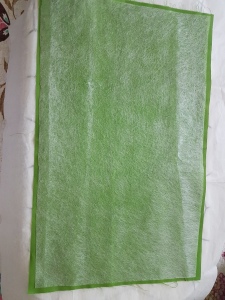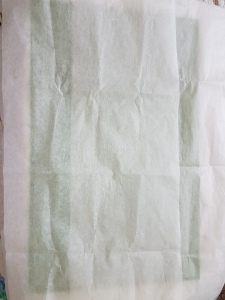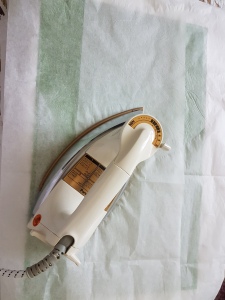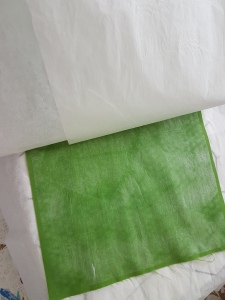So, let’s continue on our quest to making small handmade gifts that are capable of bringing a smile on the faces of the recipients.
I am starting with fairly simple projects suitable for beginners. They give you ample chance to play with your sewing machine and use its many features in innovative ways. And the fun with working on these small projects is that, they do not take a lot of time, and if you mess up, you can make modifications or start all over again.
For the bookmarks, I rummaged through my pile of scraps (if you do not have too many of them, ask your tailor to return your cuttings from that favourite dress you asked him to make) and got out some nice and colourful ones.
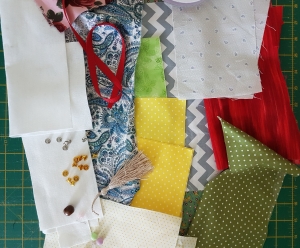
My scraps
Apart from the scraps, you also need, some pieces of thin stiff batting, or stiff felt. Beads, tassels and ribbons work as great additions.
I made all of mine at 7″x 1.5″, but you can choose to do any shape or size you like. There is no prescribed shape or dimensions, so let your imagination fly.
To start off, baste some of your fabric pieces to the batting using basting spray, or if you don’t have one of those, the humble school glue stick works just as well. Just spread a thin layer on the wrong side of the fabric and smoothen out the two layers.
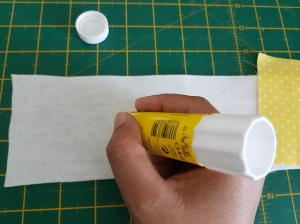
And now, the fun begins, play with the decorative stitches on your machine, add a funky quote if you have the monogramming option,applique, hand embroider, paint, or use a fabric marker to write your favourite saying. I even used up some bits of vintage hand embroidery.
MY SECRET: I always try out whatever I am doing on a scrap before adding it to my project. Saves me the trouble of picking up the seam ripper every time.
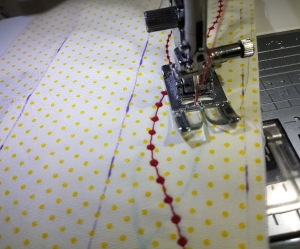
When I was done playing around with all the scraps that I had sorted, this was what I came up with:
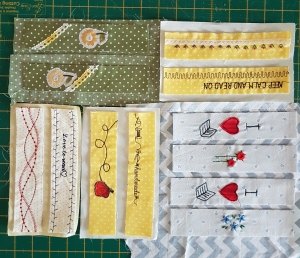
And then, with the wrong side of the lining fabric facing up, I basted them on to my completed pieces as before. And trimmed them down to the size I was looking for.
Now, to finish up the edges, I set my machine on a zigzag (satin) stitch, and fixed the stitch length at 1 mm and the stitch width at 4 mm. Then I went around the edge of each bookmark in such a way that the needle fell on the fabric on one side and just outside the edge of the fabric on the other.
Turning corners may be a bit tricky, but it works when you get a hang of it. And as I said before, don’t worry if you spoiled that first one; you could either discard it, or like me, just change the shape and make it curvy. New design…ta da!!
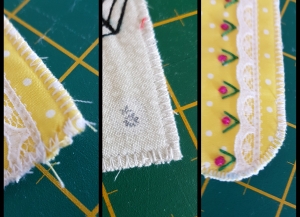
The messed up, the neat and the curvy one!
Voila!! Your pretty bookmarks are ready!!
Unless, you want to play some more. In which case, you can add eyelets (lots of YouTube videos on that one), and decorate with ribbons, beads, tassels…
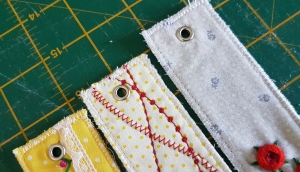
Mine look like this, after I had spent the morning playing with them…
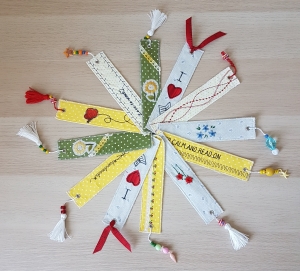
Aren’t they cute!! The girls are already laying claims on them!
They make lovely teacher gifts with the school years coming to an end pretty soon, or personalize that book you bought for your bookworm friend’s birthday, or sell them at the school spring fair.
Follow my blog for more of these fun projects, and share it with your friends too. Send me a picture if you decide to make some of them.
That’s me signing off for now. Catch up with you soon with another fun project…















